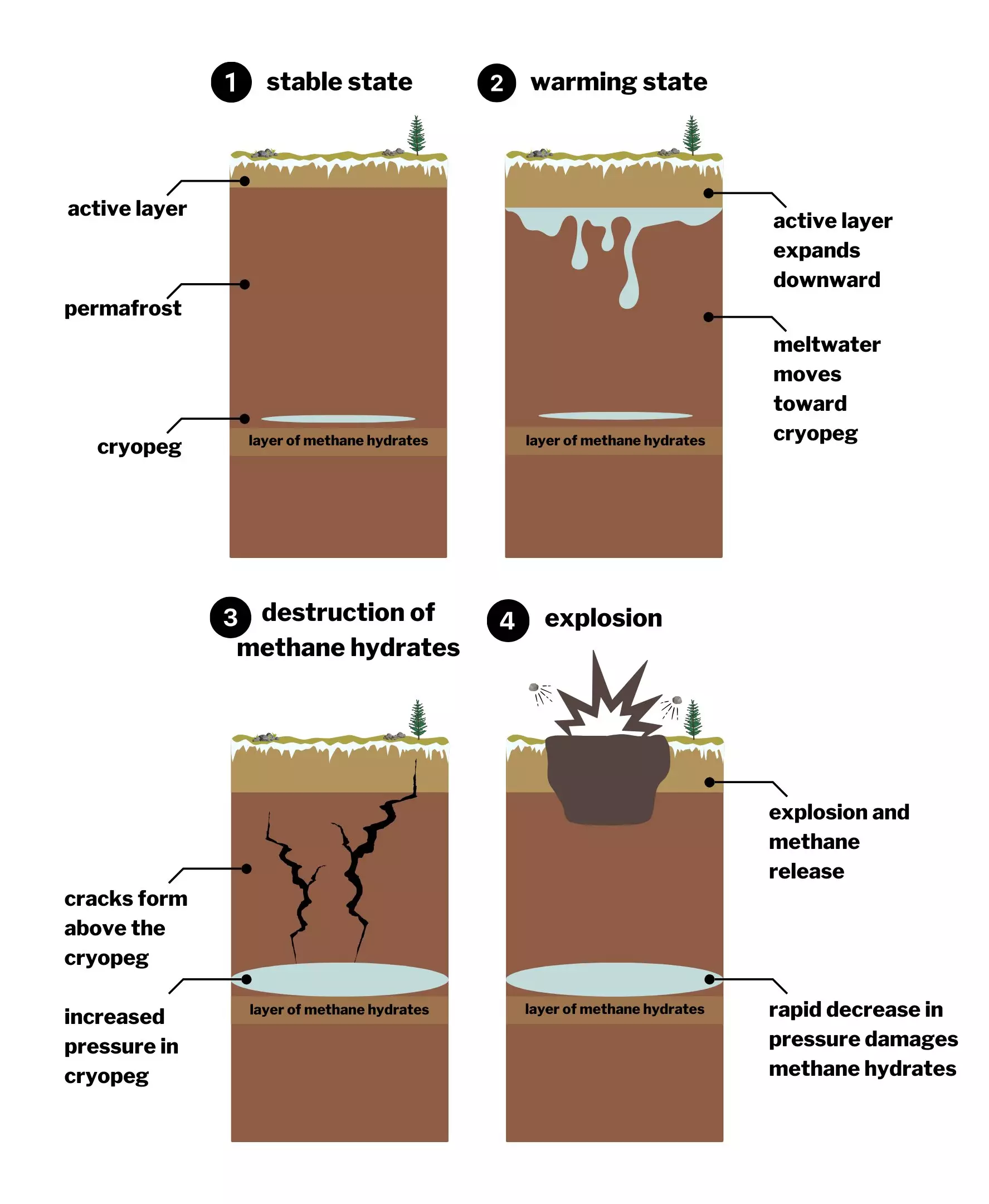The profound revelation of crater formations in the Siberian permafrost has captured the attention of scientists and the general public alike. Initially observed on the Yamal Peninsula in 2014, these mysterious geological depressions have prompted extensive inquiry into their origins and implications. Over the past ten years, numerous theories have flooded the discourse, each attempting to decipher the potential causes ranging from natural gas reserves to permafrost melting. However, recent research offers a groundbreaking perspective, linking these phenomena directly to the impacts of climate change on the unique geological characteristics of the region.
At the core of the crater formation lies methane, a potent greenhouse gas that can be found trapped beneath the permafrost in the form of methane hydrates. Traditionally stable under the harsh Arctic conditions, these hydrates can rapidly destabilize due to rising temperatures, leading to a cascade of events that culminate in explosive releases of methane gas. This new study, notably highlighted by Ana Morgado from the University of Cambridge, articulates how warming influences both the active surface layers and deeper permafrost. Such interactions not only threaten climate stability but also delineate an alarming reality regarding geothermal effects precipitated by climate change.
The researchers propose that the warming active layer above the permafrost leads to drastic pressure changes in deeper, previously stable systems. This finding deviates from earlier assertions that simply attributed the explosive events to a general permafrost melt. It provides a nuanced insight into how underlying geological features and climatic shifts create a precarious scenario where pressure accumulation can culminate in eruptions reminiscent of geological explosions, fundamentally altering our understanding of the permafrost’s stability.
Delving deeper into the subject, the research team employed a comprehensive analytical approach, likening their investigations to a detective’s pursuit of evidence. They critically examined whether the craters resulted from chemical reactions—analogous to explosives detonating—or from physical processes akin to a bicycle tire bursting under excessive pressure. Julyan Cartwright, a vested geophysicist in the research, concluded that the evidence overwhelmingly supported a physical source for the explosions, negating the likelihood of reactive chemical processes.
The intriguing aspect of their findings revolves around the mechanism of osmosis acting as the “pump” generating pressure within these systems. Like water moving through a selectively permeable membrane, the high-salinity conditions prevalent among the cryopgs allow for water from melting layers to be forced into already saturated environments. Understanding this mechanism is essential, as the interactions of these natural processes with climate-induced changes establish a framework for appreciating the craters’ unique formation conditions.
The implications of these findings reach beyond mere curiosity about geological phenomena. As the climate crisis accelerates, the destabilization of methane hydrates poses significant risks, both ecologically and climatologically. Methane, being a greenhouse gas far more potent than carbon dioxide in terms of its global warming potential, can significantly exacerbate climate change if released in large quantities. Thus, the craters serve as stark indicators of what might unfold if climate change remains unchecked.
Moreover, the study delineates how prolonged warming trends, beginning as far back as the 1980s, have set the stage for these explosive occurrences. As the active layer continues to melt, the intimate relationship between surface conditions and subsurface dynamics reiterates the need for urgent climate action. The Yamal Peninsula is not merely an isolated anomaly—instead, it symbolizes the boundaries of climate-induced geological transformations that may soon manifest in similar Arctic regions across the globe.
The enigmatic Siberian craters underscore far-reaching consequences tied to climate change and geological interplay. This research adds depth to our understanding and presents an urgent call for attention regarding the implications of warming temperatures on permafrost dynamics. As scientists like Morgado and Cartwright illuminate the intricate processes behind these explosive events, it becomes increasingly evident that the transformations occurring in Siberia could herald significant environmental shifts elsewhere. The phenomenon not only signifies a local anomaly but serves as an ominous reminder of the unpredictable and potentially catastrophic consequences of our changing climate. The need for a comprehensive response plan remains critical as we navigate the complexities of a warming world.

